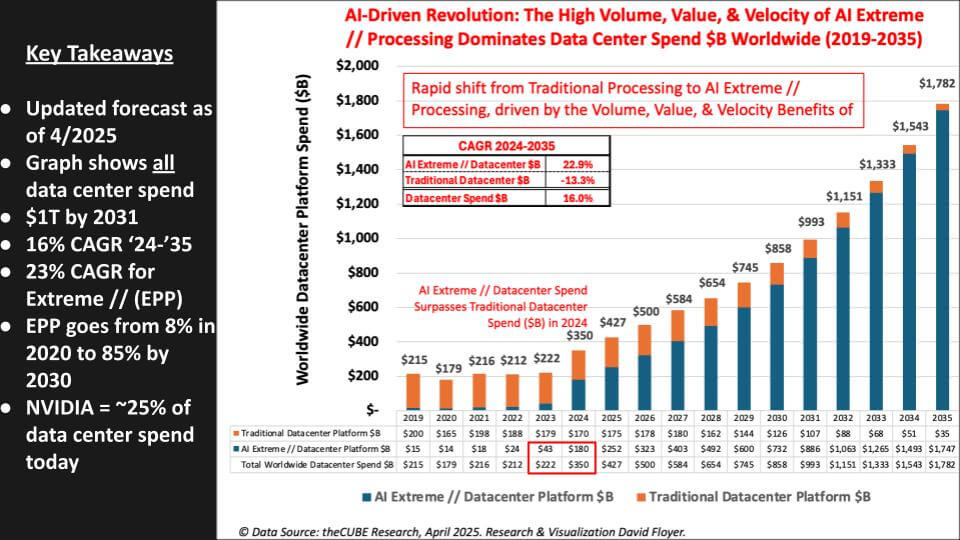2025 is NOT Going to be The Year of AI Agent, and Here's Why.
The Long and Winding Road to Agentic AI: Separating Hype from Enterprise Reality
The AI hype machine is in overdrive, but most enterprises aren't ready for prime time
Artificial intelligence is evolving at a breakneck pace. Every week seems to bring breathless announcements of new AI breakthroughs and capabilities. Amid this frenzy, agentic AI - autonomous software agents that can orchestrate complex tasks - has emerged as the next frontier.
But while the potential of agentic AI is immense, the reality for most enterprises is far more sobering. Despite the hype, true agentic AI remains years away for all but the most advanced organisations.
As Dave Vellante of theCUBE Research puts it,
"2025 is not going to be the year of the agent. It'll be the year of agent marketing."
Enterprises are leaning in, but it's still early days for AI adoption
Recent survey data from ETR paints a picture of cautious but growing enterprise AI adoption:
80% of enterprises are now paying for AI in some form
Nearly two-thirds are tapping into AI APIs
39% are experimenting with open-source models
27% are training proprietary models on-premises
These numbers show enterprises aren't sitting on their hands when it comes to AI. But they're a far cry from the agentic vision being hyped by many vendors.
The AI infrastructure boom is real, but it's a tale of two speeds
Make no mistake - AI is driving massive infrastructure investment. As Dave Vellante notes in his recent analysis:
"The data center super cycle kicked in in earnest in 2024. What was essentially a perpetually roughly $200 billion business...exploded in 2024...to 350 billion. That's a 58% growth rate in a single year, which is going to continue at an accelerated pace for a decade."
But this boom is playing out very differently for cloud providers versus traditional enterprises:
Cloud titans like AWS, Google, Microsoft and Meta are pouring over $300 billion into AI data centers this year alone
On-premises enterprise AI spending is growing, but at a much slower pace
This bifurcation means cloud AI adoption is rocketing ahead, while on-premises enterprise AI won't reach "escape velocity" until later this decade.
2025 is the year of agent marketing, not agent reality
Why? Because the vast majority of enterprises still lack the foundational capabilities needed to effectively deploy and manage autonomous AI agents:
"Our research shows that more than 85% of enterprises still need major upgrades in data quality, and the other 15% probably don't know that they do," says Vellante.
The harsh reality is that most companies are still grappling with basic data management issues. As one example shared by the researchers, "one bank found 6,000 table entries that defined what a customer was." If you can't even agree on what constitutes a customer, how can you possibly expect AI agents to make accurate, business-critical decisions?
As Vellante warns,
"agents hallucinate when the ground truth is fuzzy."
In other words, garbage in, garbage out – but now with potentially catastrophic consequences as AI agents act on flawed information.
This doesn't mean AI won't deliver value in the near-term. Co-pilots and other assistive AI will drive real productivity gains. But the grand vision of fully autonomous agents orchestrating complex business processes? That's still years away for most.
There are three critical areas where enterprises are falling short in their readiness for agentic AI:
1. Data quality and lineage remain massive hurdles
AI agents need high-quality, well-structured data to function effectively. But most enterprises are drowning in data silos and inconsistencies.
2. Integration and orchestration are far from seamless
Vendors love to tout "seamless integration" for their AI solutions. The reality is far messier. Decades of patchwork enterprise integration efforts have left a tangled web that autonomous agents can't easily navigate.
Some SaaS vendors are making progress within their own domains. But cross-application integration remains a major challenge. The risk is ending up with siloed AI agents that can't effectively collaborate across business functions.
What’s even more important but very few vendors factor it in their plan is…
Keep reading with a 7-day free trial
Subscribe to The MLnotes Newsletter to keep reading this post and get 7 days of free access to the full post archives.



